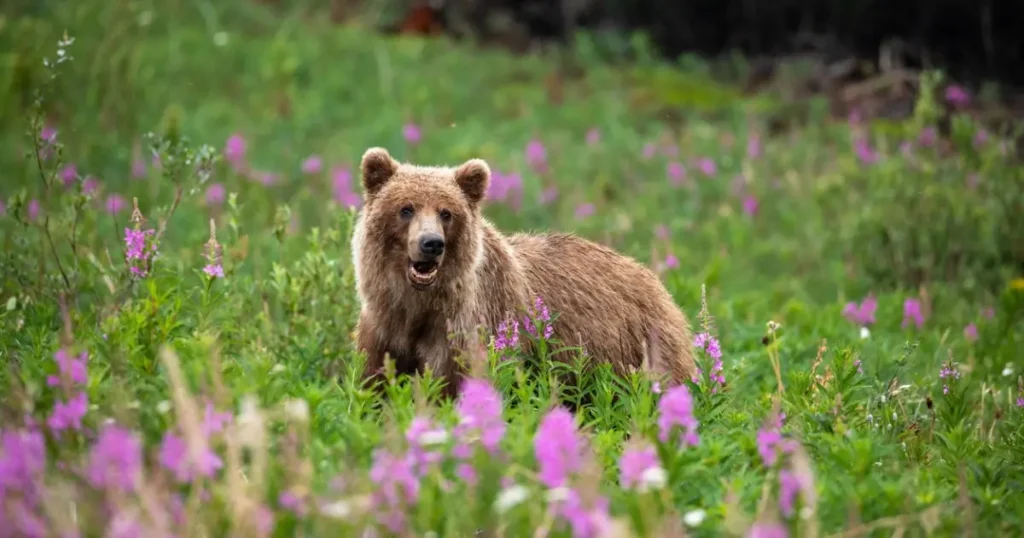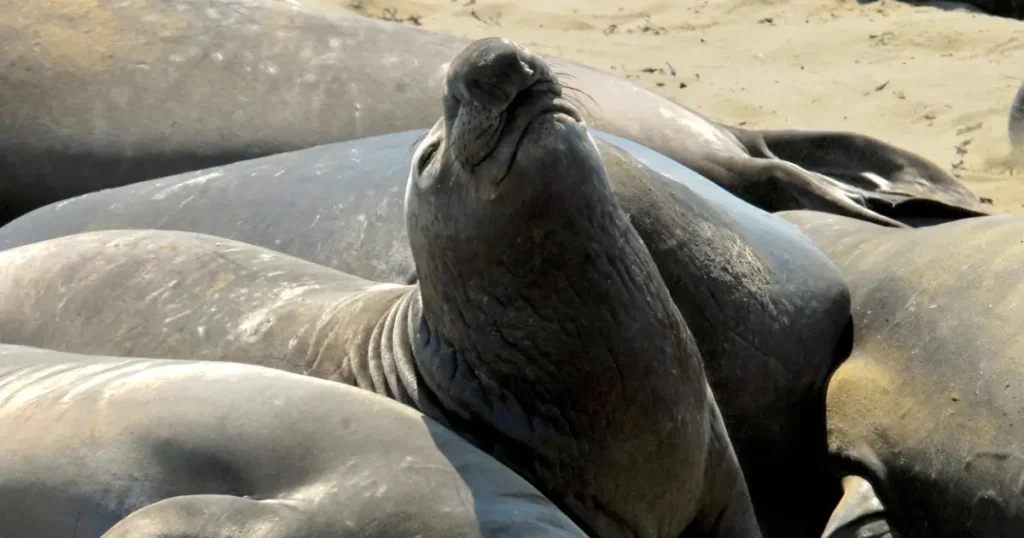
Photo by heckepics / Getty Images
Grizzly bears and elephant seals are both in the news due to peoples’ ill-advised attempts to get close for photos or encounters in Canada.
A no-stopping zone extending 320-metres (1,049 feet) on Bow Valley Parkway near Banff National Park is being enforced by Parks Canada due to a huge volume of visitors and photographers seeking out famous grizzlies The Boss and Split Lip. This isn’t a typical slowdown of traffic due to the presence of wildlife – it’s visitors pulling over, parking, getting out of their vehicles and approaching the bears, according to media reports.
“It’s pretty unsafe … people are lingering there longer and creating these hazards,” says Saundi Stevens, a wildlife management specialist for Parks Canada in an interview with Town and Country Today. “People are approaching the bears and getting out of their vehicles, and what we’re seeing is when a train comes, the bears are trying to get out of the way and they’ll run quite quickly to get out of the way, but running towards the road or toward the people.”
Parks Canada officers, with support from local RCMP officers, will be patrolling the area and handing out penalties ranging from $115 in fines up to the maximum of $25,000.

Photo by TGCB Art Gallery / Getty Images
Too close for comfort
A child being encouraged to touch their nose to that of a juvenile elephant seal known as Emerson in Victoria was among reports received by the Department of Fisheries and Oceans, who are trying to protect marine mammals – and those who may get to close.
The Times Colonist reports that Emerson was relocated due to public behaviour from Victoria-area waters to a beach on the north end of Vancouver Island; but within six days, he swam back to his original home area. The article notes that visitors have encouraged children and pets to approach Emerson for a quick snap and encounter. But those encounters – which puts 500-pound Emerson and anyone around him at risk – could also lead to a $100,000 fine for disturbing a marine mammal, as per Canada’s fishery regulations.
Fisheries officer Morgan Van Kirk told the Times Colonist that there are concerns about personal safety and disease transmission around elephant seals, but a greater risk is Emerson becoming “habituated” to people.
“That can only end really poorly — either himself or somebody [else] getting injured,” Van Kirk told the Times Colonist. “We want to keep wild animals wild. At the end of the day, the number one thing is his safety and public safety.”
The Fur-Bearers encourages everyone to appreciate, enjoy and feel connected to nature. But we must always remember that wildlife have their own emotions and needs and deserve to be given space to experience and express them.
How do you respect wildlife while visiting new areas? Let us know by emailing info@TheFurBearers.com or commenting on our social media posts on Facebook, Twitter/X, or Instagram!
